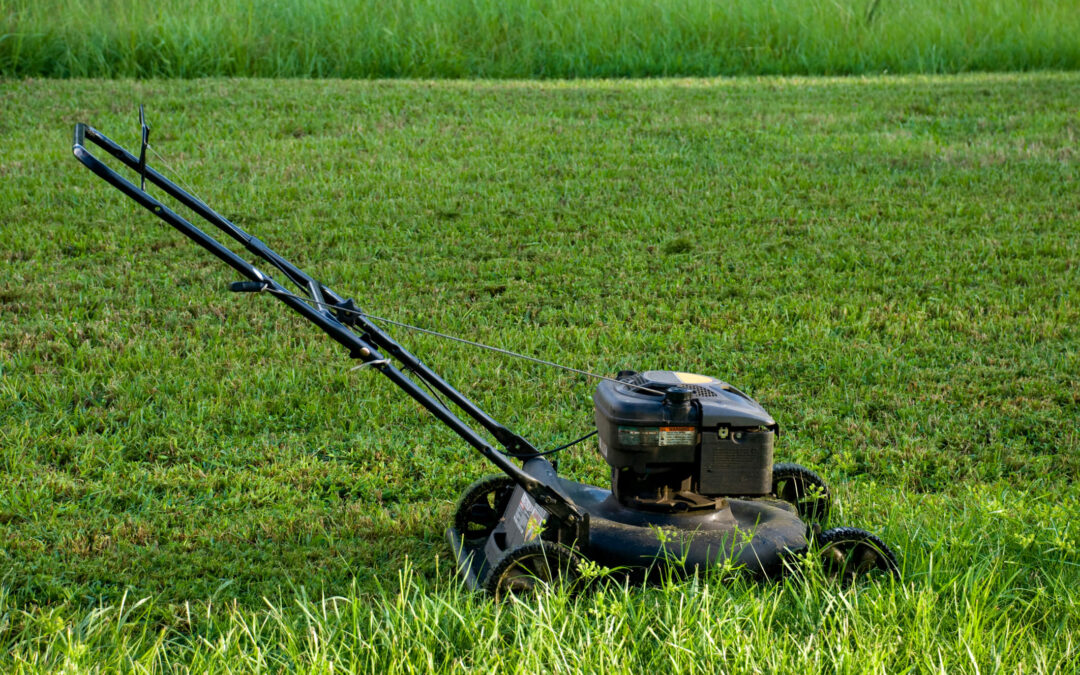After a cooler than usual winter, the temperature is rising again in Central Florida causing grasses to awaken from their dormancy. So, get the oil changed in your mower, or get its battery charged up, and read on to learn how often you should be cutting your lawn to keep it healthy and well-manicured.
Knowing when to mow your lawn isn’t always so cut and dry!
There’s a wide variety of gorgeous grass choices available for Central Florida lawns, and they each have specific manicure needs. This is the reason why you first need to know the type of grass you’re growing before you know how often you need to break out the mower.
St. Augustine
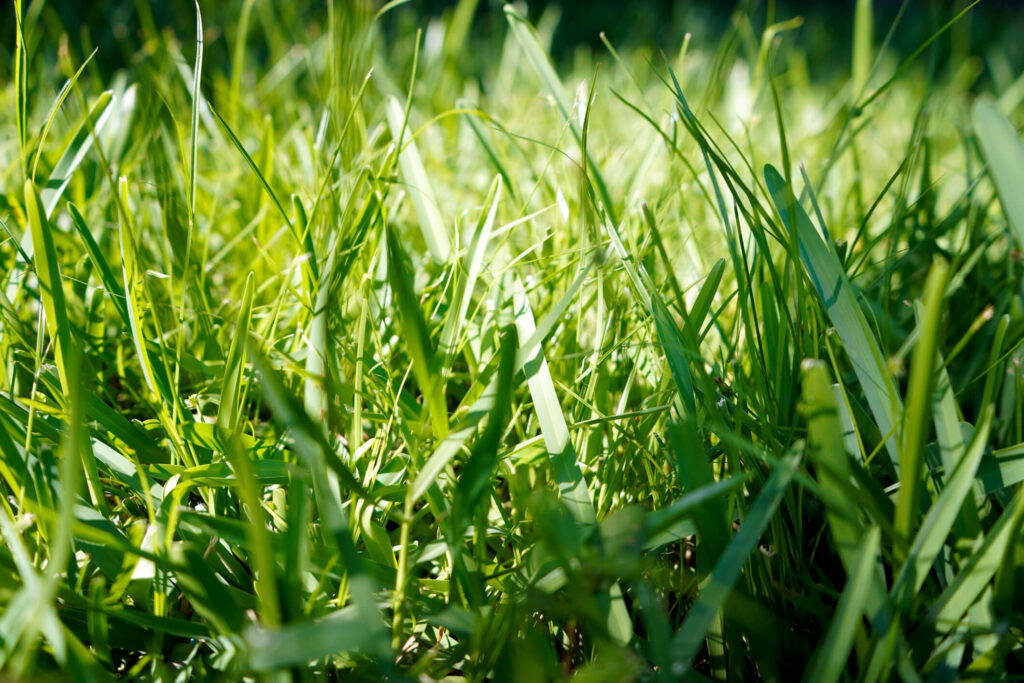
St. Augustinegrass is the most popular type of grass for Florida lawns because it loves sun, heat, and humidity and can handle droughts. While St. Augustinegrass includes varieties such as CitraBlue and Palmetto, Floratam is that one that’s most widely used for residential lawns.
St. Augustinegrass is thick and fast growing, so it’s high-maintenance and requires frequent mowing. When a St. Augustine lawn receives proper irrigation, it needs to be mowed at least once a week.
Bahia
Bahiagrass is frequently chosen for Orlando lawns because it grows well in sandy soil and thrives in hot, dry conditions. Bahiagrass is low maintenance, so it’s perfect for homeowners that don’t want to mow very often. In fact, this type of grass will look its best and stay healthier when it’s allowed to grow 3-4 inches high before being mowed.
The trick to having a beautiful bahiagrass lawn is to avoid watering it too often. Bahiagrass thrives in dry soil, so overwatering will result in brown patches and weed growth.
Be sure to check your irrigation system every so often to make sure it’s working properly. If you’re not sure your system is running like it should, call us or complete our request service form and we’ll be happy to take a look.
Bermuda
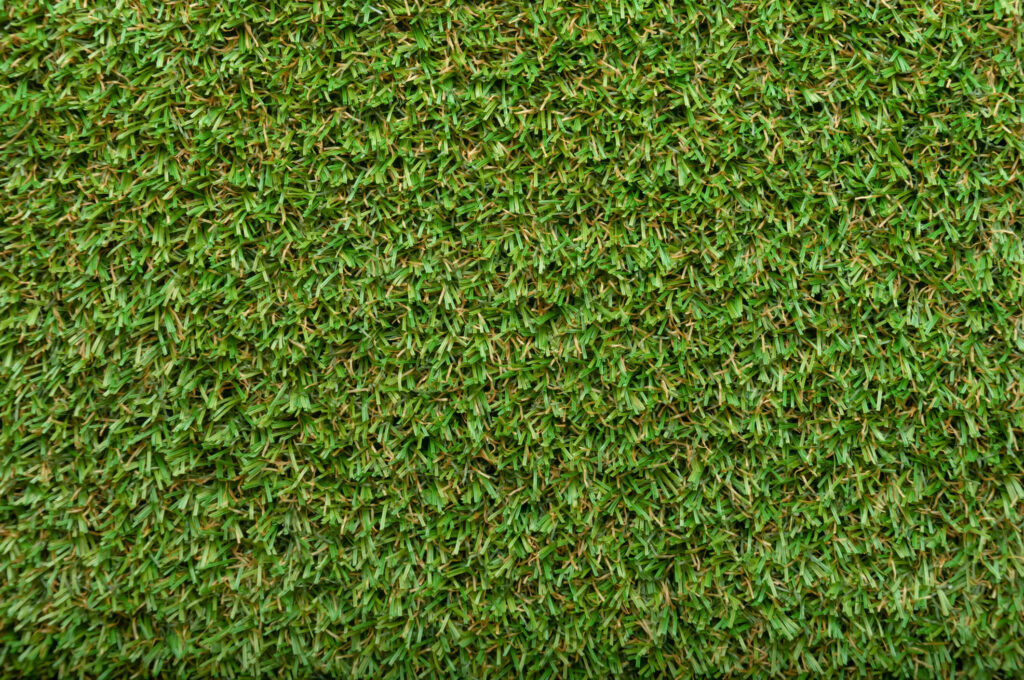
Often planted on golf courses, Bermudagrass is great for residential lawns because its dense growth habit prevents weeds and insect infestations. It’s an easy grass to care for, however, it must be mowed regularly to a height of 1-2 inches.
Centipede
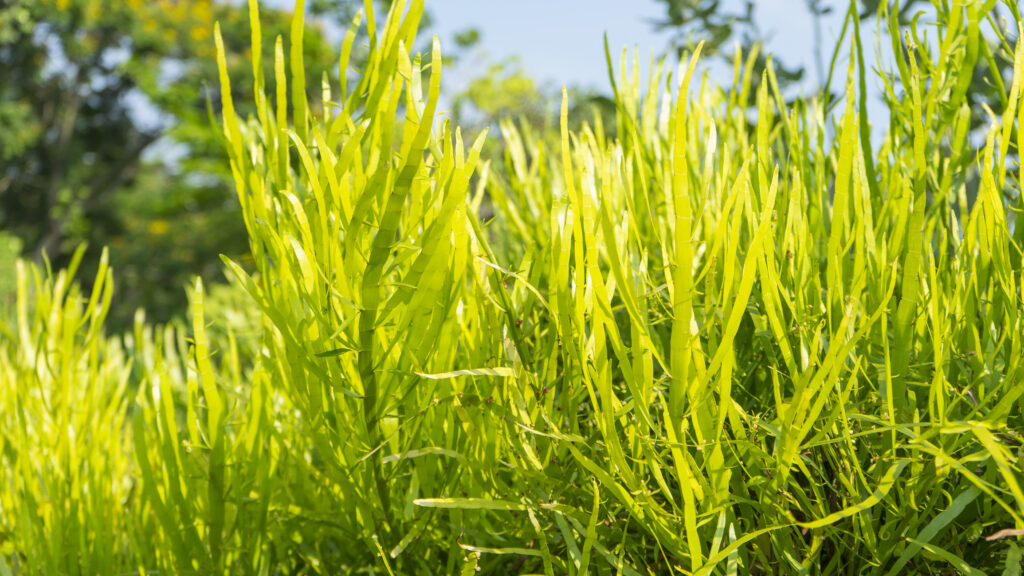
Centipedegrass is another great choice for Central Florida homeowners who don’t want a high-maintenance lawn. It likes sandy soil and doesn’t require frequent mowing because it’s a slow grower. When it is time to give it a trim, cut it to a height of 1-2 inches.
Take note that centipedegrass doesn’t do well with a lot of foot traffic, so if you have children or pets, avoid planting this type of lawn.
Zoysia
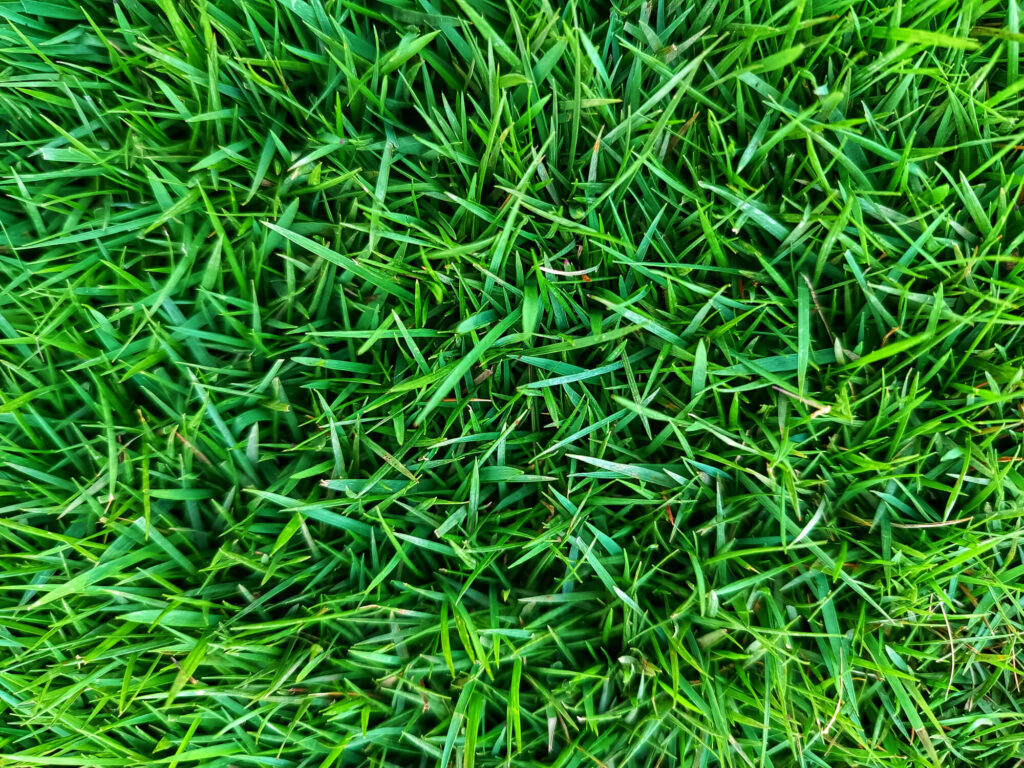
If you want a low-maintenance, dark green lawn that can handle getting trampled upon, you’ll love zoysiagrass! It grows slowly and doesn’t need much water, so you won’t have to mow it often. When it’s time to give it a manicure, trim it to a height of 1-2 inches.
What’s the best type of grass for your lawn?
Choosing the type of grass you want for your lawn is an important decision. Once it’s there, it’s expensive to replace, so you need to consider how much time you want to devote to its care and maintenance. If you consider mowing a tiresome chore, you should plant a slow growing grass. However, if you enjoy being outside tending to all your lawn’s needs, you probably won’t mind giving the grass a manicure once or twice a week.
You must also take into consideration the grass’ irrigation needs. If you are concerned about conserving as much water as possible, choose a turf that’s drought tolerant. Planting a grass that thrives in dry conditions also means that you won’t have to mow as often.
Once you choose the lawn that best fits your lifestyle, you’ll enjoy the gorgeous green grass surrounding your home even more because you’ll be mowing to your heart’s content—or not!
Remember, if you ever need assistance with sprinkler repair or irrigation in the Orlando area, make sure and give us a ring!

